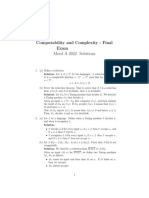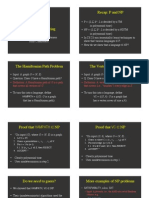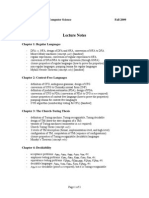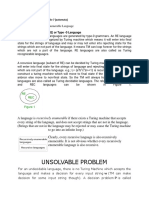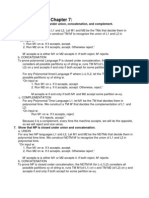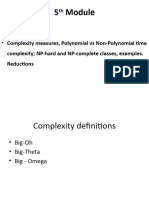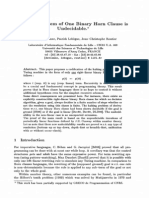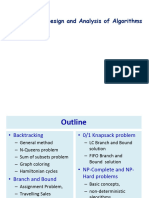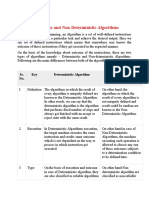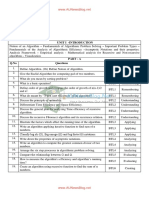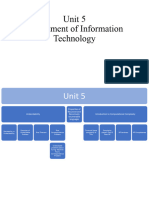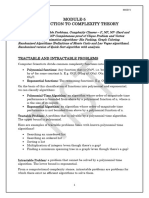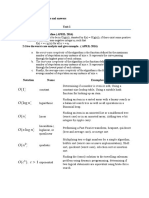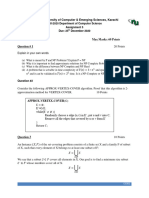0% found this document useful (0 votes)
4 views4 pagesSollution Assignment 6
The document outlines an assignment for a computer science course, focusing on topics such as Rice's Theorem, the universal language, NP-completeness, and polynomial-time reductions. It includes specific questions that require proofs and definitions related to these concepts, along with their corresponding Bloom's taxonomy levels and marks. The solutions provided demonstrate the application of theoretical concepts in computational theory, particularly in relation to undecidability and complexity classes.
Uploaded by
Navjot DhadliCopyright
© © All Rights Reserved
We take content rights seriously. If you suspect this is your content, claim it here.
Available Formats
Download as PDF, TXT or read online on Scribd
0% found this document useful (0 votes)
4 views4 pagesSollution Assignment 6
The document outlines an assignment for a computer science course, focusing on topics such as Rice's Theorem, the universal language, NP-completeness, and polynomial-time reductions. It includes specific questions that require proofs and definitions related to these concepts, along with their corresponding Bloom's taxonomy levels and marks. The solutions provided demonstrate the application of theoretical concepts in computational theory, particularly in relation to undecidability and complexity classes.
Uploaded by
Navjot DhadliCopyright
© © All Rights Reserved
We take content rights seriously. If you suspect this is your content, claim it here.
Available Formats
Download as PDF, TXT or read online on Scribd
/ 4


